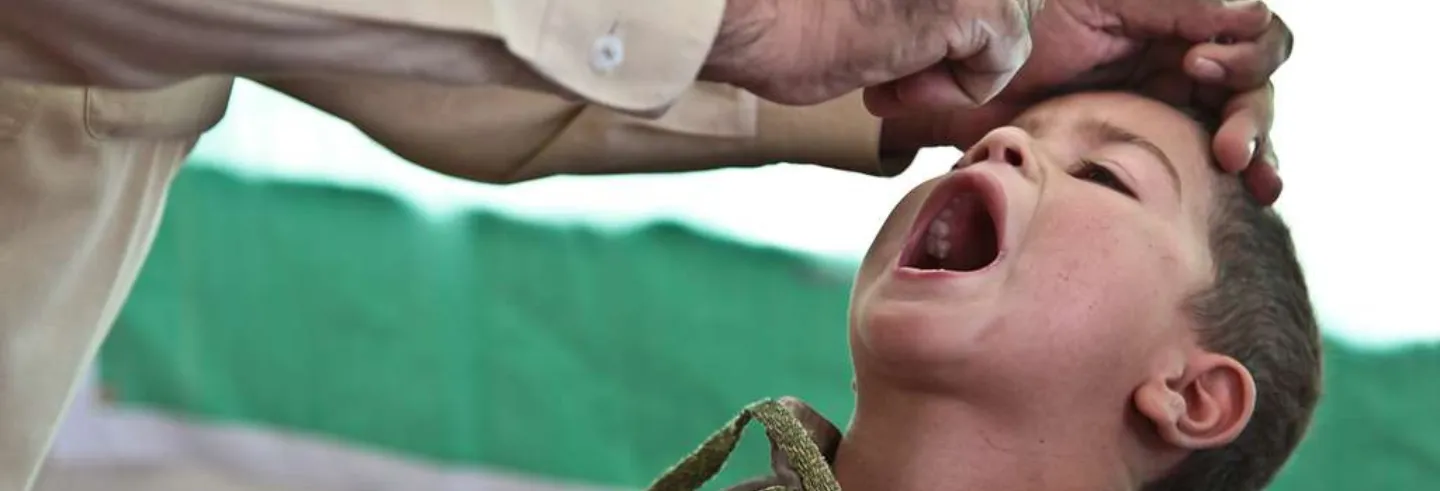My first night in Italy last month after arriving for a residential fellowship in Bogliasco, I awoke well before morning. In much of my recent work I have been thinking about temples and monastic sites in rural Bengal and it was likely this that led me to think back to the life and work of David J. McCutchion. McCutchion is known for pioneering work he did documenting early modern terracotta temples in Bengal. I return frequently to his work both for the data it provides regarding material changes taking place in the late precolonial and early colonial eras and for its formal scheme of temple styles (McCutchion 1972). It is a minor research classic.
It would take India several decades of concerted effort on the part of scientists, public health officials, politicians, and local communities to achieve near eradication in the first quarter of the 21st century.
McCutchion first came to India a few years after completing his degree at Cambridge University. The first position he took was at Rabindranath Tagore’s Visva Bharati University in Santiniketan, where he taught English. That was in 1957, when he was just 27 years old. This may have served as another prompt for my jet-lagged memories, since I arrived in Santiniketan not quite three decades later—not to teach, but to study Bengali. I believe what Amiya Kumar Banerjee (1973) said of McCutchion’s time in Santiniketan applies equally in my case; it was here we each had our hate khori ceremony, our initiation into a love for India.
Tragically, McCutchion died young, struck down by polio before his 42nd birthday, the dire side-effect of his tireless efforts to document temples throughout rural eastern India. His death ought to remind us of the incredible progress made in the past century to reduce or eradicate the incidence of poliomyelitis.
Polio vaccine
While development of the polio vaccine represents “one of the iconic scientific discoveries of the early Cold War era,” it would seem McCutchion had left the United Kingdom before the first intensive drives began there around the mid-1950s (Milward 2019). It would take India several decades of concerted effort on the part of scientists, public health officials, politicians, and local communities to achieve near eradication in the first quarter of the 21st century. In my case, I am old enough to remember polio immunization drives (using sugar cubes treated with a mild version of the live virus). Remarkably, the last case of endemic polio in the US was reported in 1979.
Flashforward to today, when we are witnessing devastating funding cuts in the US by the Donald Trump administration, in thrall to the “anti-vax” ideology championed by the current Secretary of Health and Human Services. In the case of polio alone, cuts under this administration have terminated support once provided from USAID and the Centers for Disease Control for advancing the goal of worldwide polio eradication. And this at a time when countries like Afghanistan report increases of over 250% in new polio cases. The present budget cuts are but one part of a wider and concerted campaign to undermine the authority of scientific knowledge and to question the idea of expertise, all while sowing disinformation and working to foment disorder as a pretext for further draconian interventions in civil society.
Meaning of care
In the life and tragic death of David McCutchion we have an opportunity to appreciate what it means to care for learning, to develop expert knowledge, to seek to understand the lives and cultural worlds of others, and to bequeath to future generations a body of data to support new discoveries and interpretations. But McCutchion’s story likewise highlights the risks associated with caring for such work; not merely the obvious risks associated with fieldwork in an area and a time period when access to clean drinking water was never guaranteed. Extrapolating from McCutchion’s life story, it is clear that no matter whether researchers go out to record temple inscriptions or to collect samples of dangerous pathogens, they assess and appreciate the risks associated with their work; and they make reasoned decisions regarding best practices, ideally in concert with supportive institutions and government agencies. What researchers should not have to contend with are the kinds of risks that arise when politicians and state actors belittle the fundamental care that drives their work and actively sabotage their chances for success through suspension of funding, demonization of critical theories, or sidelining of peer-reviewed publications.
Risk can never be eliminated, but should not public and private support for scholarship help sustain an institutional ecology in which taking the risk to care for one’s work has the best chance of ending well?
I have no way of knowing whether McCutchion took the risk of contracting polio into consideration before he set off on his field research; he surely appreciated the general risks associated with endemic diseases in India such as cholera, typhoid, and malaria. What I can imagine is that he pressed on thanks to the force of his passion for the work and his love for Indian history and culture. His is just one example of the kind of commitment that drives scholars and scientists to leave home, to seek out less-travelled pathways, and to carry out basic research in a myriad ways. And despite heated rhetoric around bias in the academy, the modern disciplines depend upon any number of tools for safeguarding against bias, ensuring reproducibility, and estimating rates of statistical error. Today’s naysayers may be having their way, but as the Times remarked after the death of David McCutchion, his commitment to scholarship “did more for Anglo-Indian friendship than a government or an ideology can undo.”
Having stood beside David McCutchion’s grave in Bhowanipore, I would like to believe that caring enough to take risks need not become the basis for a scholarly martyrology. To be sure, I know colleagues who have suffered through tropical illnesses and am aware, too, of those who have met with fatal accidents. Risk can never be eliminated, but should not public and private support for scholarship help sustain an institutional ecology in which taking the risk to care for one’s work has the best chance of ending well?
I happened to be sitting in Kolkata last December when I opened an email from the National Endowment for the Humanities communicating the news that I had been awarded an NEH Fellowship. Coming as it did, at the end of another stint away from home to carry out my research, the message was more than the usual good news. It felt as if this was what the inconveniences, dislocations, and minor illnesses had all been for; it seemed to represent a concrete acknowledgment not just of the care I take in my research, but of the value of that kind of caring writ large. Only, imagine, then, what it felt like just a few months later when I learned that my fellowship had been terminated, along with hundreds of others—with no apparent cause and contrary even to the intentions of Congress, which had already appropriated funds for this purpose. I could only be grateful for having been granted a fellowship by the Bogliasco Foundation. Private support for research will always be essential, but the comment from the Times regarding McCutchion’s career should cause us to ask just how much any government or ideology should be allowed to undo?
Tagore and care
Sitting in Bogliasco, thinking about David McCutchion arriving in Santiniketan back in 1957, it occurred to me that Tagore himself had once landed here in Italy, just up the coast in Genoa. That was in January 1925, when he was on his way back from Argentina; and it might be worth noting that he was to fall ill himself during that visit. More importantly, however, the times were tense following the fascist coup d’etat that had only recently taken place. Tagore found himself having to navigate among hosts and acquaintances with vastly different ideological viewpoints. At the time, he may not have had sufficient evidence to grasp the nature and trajectory of fascist rule. That said, on a return trip the following year, he manifested a somewhat problematic interest in the creative “personality” of Mussolini (Flora, 2008).
The risks of caring are worth taking, worth supporting, and worth rallying around.
Tagore’s fascination with Mussolini is one of those troubling moments in the poet’s biography; in the end, it is difficult to square with his humanism, internationalism, and reverence for freedom. But as long as we have governments and ideologies in mind, it offers us an occasion to reflect on how prominent public figures can find themselves instrumentalized for the goals of propaganda. In the end, Tagore listened to what many of his Italian friends were telling him; he came to see what his poetic infatuation had hitherto prevented him from seeing. Certainly he had many concerns during the interwar era, when he felt the need to care for Italy and his Italian friends, for India in its struggle against British rule, and ultimately for the possibility of what he envisioned would become East-West harmony. We can be grateful that eventually, by taking the risk to care, Tagore came to recognize and rectify the error of his earlier fascination with Mussolini.
On his first arrival in Italy in 1925, Tagore had spoken to an audience in Milan. On that occasion he stressed the need to prioritize the voice of humanity over the forces of greed and blind patriotism. In this respect, his posture of humanist concern remained consistent. In fact, this is precisely what led one of his fascist admirers to dismiss his remarks as the kind of nonsense one gets when poets posing as prophets try to speak the language of politics. (See the quotation from the Sanskritist, Carlo Formichi, in Flora, 1036.) It was a crude dismissal and is all too redolent of the rhetoric of the present moment, when poets, scholars, and scientists are told from on high that their care and their expertise are neither valued nor necessary. This is precisely the moment to take heart from figures like McCutchion and Tagore, and to reassure ourselves—and the public—that the risks of caring are worth taking, worth supporting, and worth rallying around.
Brian A. Hatcher is Professor and Packard Chair of Theology in the Department of Religion at Tufts University, USA.









